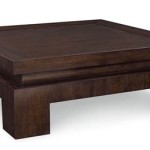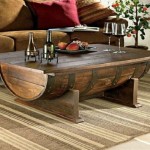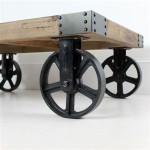How To Make a Small Round Coffee Table
A small round coffee table can be a stylish and functional addition to any living room. They are perfect for smaller spaces where a large, rectangular table might feel overwhelming. Not only are they visually appealing, but they also offer practicality in terms of space and mobility. However, finding the perfect table can be a challenge. One solution is to make your own. Crafting a small round coffee table allows for complete customization based on your specific needs and preferences. This guide will provide step-by-step instructions for creating a unique and beautiful table using readily available materials.
Choosing the Right Materials
The first step in creating a small round coffee table is to select the appropriate materials. The ideal choice will depend on your desired aesthetic and functionality. Consider the following options:
- Wood: Many different types of wood are suitable for making a coffee table, such as oak, maple, cherry, or pine. Each wood type has unique characteristics in terms of durability, color, and grain. Choose based on your desired look and budget.
- Metal: Steel or iron can provide a modern and industrial feel to your coffee table. Using metal allows for flexibility in design and can be easily painted or finished.
- Glass: Glass is a popular choice for tabletops as it adds a touch of elegance and allows for more light to flow throughout the room. Keep in mind, however, that glass requires careful handling and maintenance.
- Acrylic: Similar to glass, acrylic offers similar aesthetic benefits but is more impact-resistant and lighter.
Once you have chosen your primary material, you will also need to select materials for the legs. Options include:
- Wood: Wooden legs are available in a variety of styles and can be stained or painted to match the tabletop.
- Metal: Metal legs offer a more contemporary look and can be found in a wide array of shapes and sizes.
- Hairpin Legs: Hairpin legs are a popular choice for modern furniture as they are simple and affordable.
Planning and Measuring
Before embarking on the construction process, it is essential to plan and measure carefully. Determine the desired dimensions of your coffee table, taking into consideration the size of your living room and the space you have available. Consider the following:
- Tabletop Diameter: Choose a diameter that is appropriate for your needs and the size of your living room. A smaller table might be ideal for a smaller space, while a larger table might be more suitable for a larger room.
- Tabletop Thickness: The thickness of the tabletop will affect its stability and strength. A thicker tabletop will be more durable but will also be heavier.
- Leg Height: Determine the desired height of the coffee table based on your existing furniture and your personal preference. Standard coffee table height is around 18 inches.
Assembly Process
Once you have selected your materials and planned your design, you can start assembling the table. The specific steps will vary depending on the materials and design you have chosen.
Common steps include:
- Cutting the Tabletop: Use a circular saw or jigsaw to cut the tabletop to your desired size. If using wood, sand the edges smooth to prevent splinters.
- Attaching the Legs: Depending on your leg type, you might need to drill holes or use screws or brackets to attach them to the tabletop. Make sure to center the legs and ensure they are securely attached.
- Finishing: Once the table is assembled, apply a stain or paint to your desired finish. If using glass or acrylic, make sure to clean the surface thoroughly before assembling.
Remember to wear safety gear and use caution when working with tools and materials. Follow the manufacturer's instructions for all materials and tools.
Customization and Embellishment
After the basic construction is complete, you can further customize your table by adding unique elements and embellishments to personalize its style.
- Decorative Elements: Consider adding decorative elements to the tabletop, such as inlays, mosaics, or stencil art. These details can enhance the visual appeal and create a unique piece of furniture.
- Shelves: Adding a bottom shelf can provide extra storage space for magazines, books, or other items. It can be made from the same material as the tabletop or a contrasting material for added visual interest.
- Unique Leg Designs: If using wood, shape the legs into more unique designs. You can also create a custom metal leg design by bending and welding.
Conclusion
Making a small round coffee table can be a fulfilling and rewarding DIY project. By following these steps and using your creativity, you can create a unique and functional piece of furniture that complements your living room and adds a touch of personality to your home.

Diy Round Coffee Table

More Like Home Round Coffee Tables 4 Easy To Build Styles Day 10

Round Coffee Table With Storage 10 Steps Pictures Instructables

15 Rounded Diy Coffee Tables

Diy Round Coffee Table

Style A Round Coffee The Easy Way Stonegable

The Best And Easiest Diy Coffee Table On A Budget

Diy Small Side Table The Inspired Work

Patio Coffee Table 100 Things 2 Do

Diy Round Pedestal Coffee Table Free Building Plans And Tutorial
Related Posts








